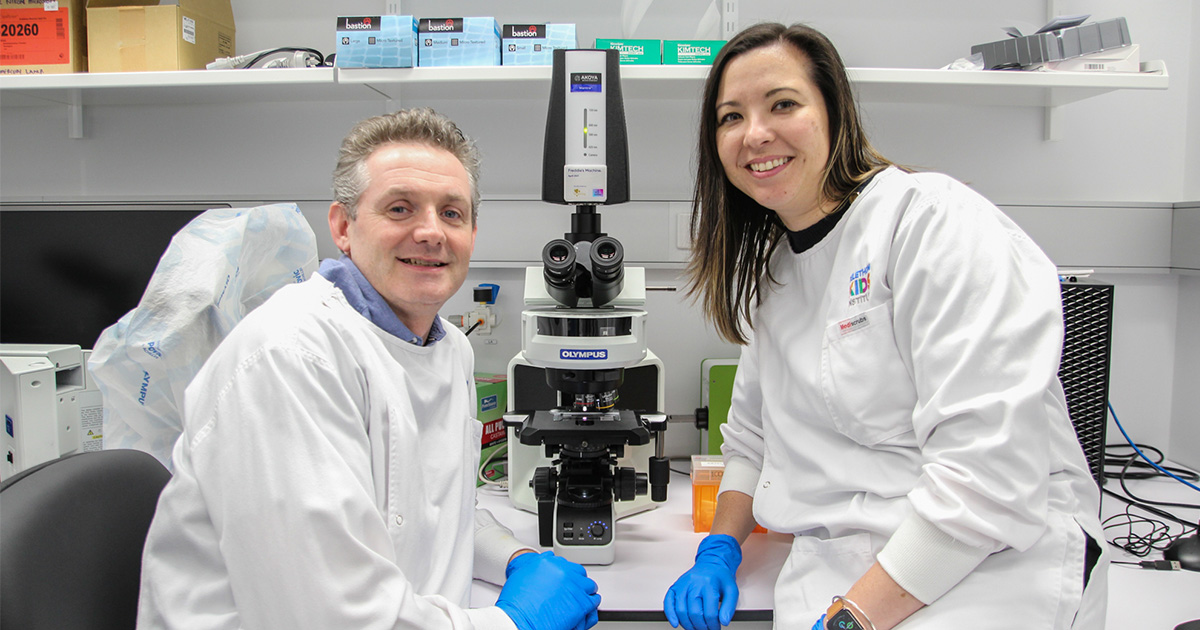Search
News & Events
New imaging equipment to boost children's cancer researchA cutting edge cancer imaging facility will help specialist children's cancer researchers at Perth's Telethon Institute for Child Health Research.
Research
MEIS proteins as partners of the TLX1/HOX11 oncoproteinAberrant expression of the TLX1/HOX11 proto-oncogene is associated with a significant subset of T-cell acute lymphoblastic leukemias...


News & Events
Finding new treatments for rare brain cancers in infantsThe WA Kids Cancer Centre has secured $1.1 million in funding from the Medical Research Future Fund’s (MRFF) Paediatric Brain Cancer Research Stream 2 to develop more effective and less toxic treatments for rare brain cancers in infants.

News & Events
The Kids researchers awarded Raine Medical Research Foundation fundingCongratulations to three The Kids Research Institute Australia researchers, who have been awarded funding from the Raine Medical Research Foundation.
Research
Parental smoking and risk of childhood brain tumorsChildhood brain tumors (CBT) are the leading cause of cancer death in children, yet their etiology remains largely unknown.
Research
Parental alcohol consumption and risk of childhood acute lymphoblastic leukemia and brain tumorsChildhood acute lymphoblastic leukemia (ALL) is the most common childhood malignancy and brain tumors (CBTs) are the leading cause of cancer death in...
Research
Breastfeeding and nutrition to 2 years of age and risk of childhood acute lymphoblastic leukemia and brain tumorsAcute lymphoblastic leukemia and childhood brain tumors are 2 of the most common forms of childhood cancer, but little is known of their etiology.
Research
Childhood and parental diagnostic radiological procedures and risk of childhood brain tumorsWe found no evidence of positive associations between risk of childhood brain tumours overall and childhood or parental pre-pregnancy radiological procedures.
Research
A systematic review on the impact of delayed local therapy in patients with Ewing sarcoma of the pelvisLocal treatment of pelvic Ewing Sarcoma (EWS) is czhallenging due to complex anatomy and potential complications. Local therapy may be deferred to maintain chemotherapy dose-intensity, but the impact of this delay on outcomes remains unclear.
